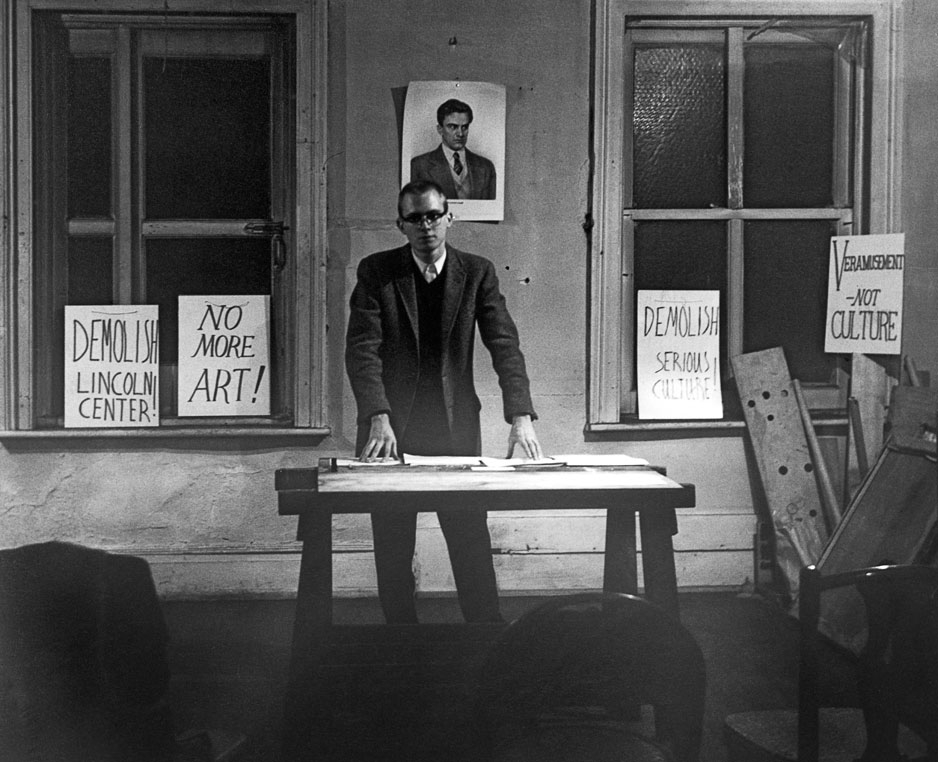Early in the exhibition ±1961 a visitor encounters Onion Walk (1961), by choreographer and dancer Simone Forti. A wonderfully (and deceptively) simple work, Onion Walk consists of nothing more than a sprouting onion balanced atop an empty bottle. As the onion’s sprouts grow, they gradually draw matter out from within the bulb until, ultimately, the onion’s overall weight shifts and it falls off the bottle. Onion Walk thus embodies ideas that inform ±1961 as a whole: it is at once an object and also a kind of performance and thus an example of ‘intermedia’; it is deskilled and unpretentious and thus manages to bridge the gap between art and life; and above all, it is a kind of ephemera, not in the sense of ancillary work on paper, but rather in the more fundamental sense of something that would not, could not and was not intended to last.
±1961 takes as its point of departure the remarkable publication An Anthology of Chance Operations (1963), edited by the composer La Monte Young (with poet Jackson Mac Low) and designed by Fluxus ringleader George Maciunas. Compiled by Young largely in 1961, An Anthology was an odd and radical publication, a collection of experimentally polyvalent texts, musical compositions, choreographies (including Onion Walk), word-events and other unclassifiable material. In spirit and methodology, it was a direct product of John Cage’s composition classes at the New School in New York in the late 1950s, and also the direct precursor of the Fluxus movement that Maciunas would promote in the following years.
Curated by Julia Robinson and Christian Xatrec, ±1961 brings together contemporaneous work by contributors to An Anthology – a small group, a clique even, centred on Young and with its nucleus in downtown New York (despite a certain degree of geographic disparity). Such a tight focus is a great boon to a thesis-driven, historically oriented exhibition; but in the case of ±1961, it forces the exhibition headlong into the inevitable problem of how to present, within the formaldehydelike environment of the museum, work by an exceedingly small group whose shared ethos entailed guerrilla-style resistance (and occasional outright hostilities) directed precisely towards such presentations.
Not surprisingly, in this museum context art objects qua art objects fare better in weathering the passage of time, and ±1961 includes many memorable such pieces: spare sculptures by Walter De Maria, a musical composition by Earl Browne that takes the form of a large, constructivist-style drawing stretched out on the floor, various works by Robert Morris and Ray Johnson, and a delightful announcement for the publication of John Cage’s book Silence (1961) in the form of a matchbook. In addition, daily dance performances and occasional film screenings serve to enliven the exhibition.
But in fact live art was the common currency among this select group of artists, composers, dancers and writers, and its transactional exchange, more than anything else, is what opened the way for the ‘expanded arts’ of the exhibition’s subtitle. As a result, the bulk of ±1961 is made up of material that is highly resistant to satisfactory gallery display (and that cannot, like Forti’s onion, be remade afresh every few days.) Here ±1961’s combination of restrictive focus and vast, sprawling scale works to its disadvantage. Had it been reduced in size, and had curatorial criteria been exercised to a greater degree (and with greater finesse), ±1961 might have functioned as a kind of ‘chamber exhibition’ – smaller, more intimate and more capable of conveying the unruly, challenging and challenge-taking spirit pervading certain lofts in downtown Manhattan in and around 1961.
This article was first published in the December 2013 issue.
